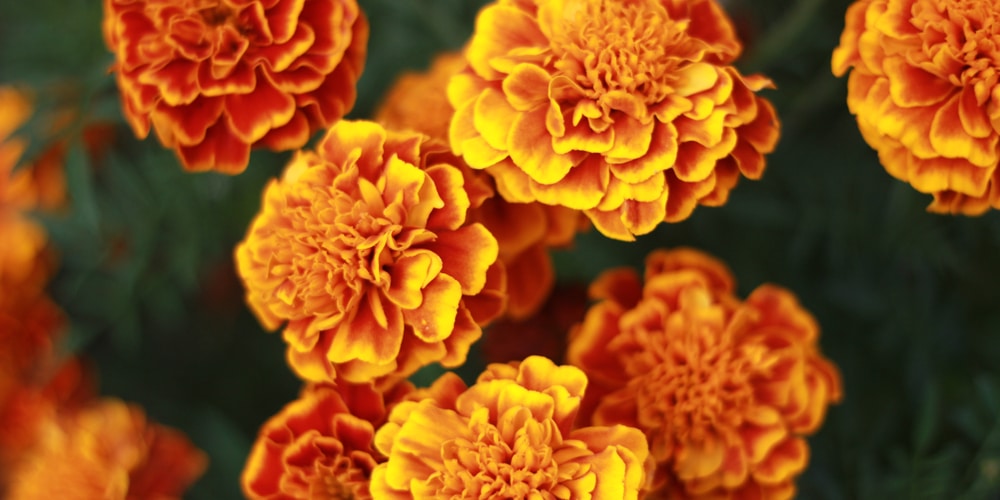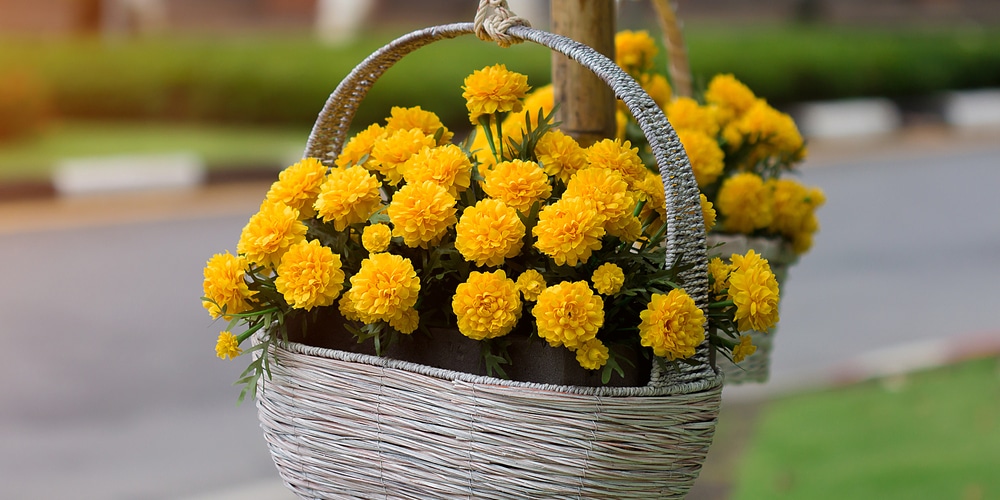Deadheading marigolds is an excellent way to keep your plant blooming with more fresh flowers for longer than it usually would. Read on to discover when and how to deadhead marigolds.
When To Deadhead Marigolds
Marigolds typically produce flowers from May to September. But if you live in a warmer climate, you might be able to enjoy marigold flowers through October. So, you’ll need to deadhead any spent (old) marigold flowers throughout these months.
Deadheading your marigolds will encourage new flowers to blossom. It will also prevent spent flowers from rotting on the plant.
Your marigold plants will continue producing flowers even if you don’t deadhead them. But the quantity and quality of those flowers often aren’t as good as plants with gardeners who deadhead them.
That’s because spent flowers turn to seeds, and this process requires energy from the plant. So, you’ll drive energy to new flowers by deadheading your marigolds as soon as you see them whither.
Best of all, deadheading is a fertilizer-free way to improve the quality of your flowers. These plants often get leggy when gardeners apply fertilizer to marigolds to encourage more blossoms.
How To Deadhead Marigolds
If you love the thought of having bushy marigold plants with abundant blooms, follow the steps below to deadhead them.
Step 1: Identify Spent Flowers
While you can (and should) deadhead plants that are already extremely shriveled, it’s most effective to deadhead the flowers when they’re just starting to wilt.
You don’t want to wait too long to deadhead shriveled flowers because they’ll release seeds, causing marigolds to show up in places in your garden where you don’t want them.
Step 2: Find the Right Leaves
You should deadhead your plants between the flower and the first set of leaves that sit closest to it. The closer you pinch or cut your flowers off by these leaves, the better.
Step 3: Pinch or Snip Off the Flower
You don’t need fancy tools to deadhead; pinching flowers off with your thumb and index finger will do the trick. But you can also use scissors or pruners to snip off the spent flowers.
Step 4: Reuse the Spent Flowers
Spent marigold flowers are an excellent natural fertilizer for your plant that will slowly release nutrients without creating a leggy appearance from chemical fertilizers. So, dropping the spent flowers in the soil around your plant is a great option.
Alternatively, you can toss the spent flowers into your compost pile for future organic fertilizer for your garden.
Is It Possible To Go Overboard With Deadheading?
No, you don’t have to worry about deadheading your plants too much. Whenever you see spent flowers, you can confidently pinch them off your plant without impacting its ability to produce flowers. On the contrary, you’ll be helping it.
Similarly, every month is a good month to deadhead marigolds. These plants produce flowers continuously throughout their blooming season, especially the French variety, so deadheading them as soon as you see spent flowers is ideal.
You can also deadhead marigolds at any time of day. Doing so in dry weather will make it easier on you, given that spent flowers can get soggy. But deadheading wet marigold flowers won’t negatively impact the plant’s ability to grow new flowers. Deadheading can also help marigold plants survive the winter.
Are You Ready To Keep Your Marigolds Blooming?
Deadheading your plants is an excellent way to keep them looking fresh. They’ll also have more blossoms throughout the season than if you let nature take its course.
Luckily, deadheading marigolds don’t require expensive tools—or any tools at all, for that matter. It can also be a fun activity to do with kids.

